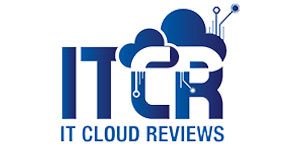Data analytics is like the Sherlock Holmes of the business world. It’s all about examining raw data to uncover patterns, correlations, and insights that can drive better decisions. In our increasingly data-driven world, understanding data analytics is no longer optional—it’s a necessity.
Table of Contents
What is Data analytics
Data analytics is the process of analyzing and interpreting data using statistical and computational methods to gain insights and knowledge from it. It involves collecting, cleaning, processing, and modeling data to identify patterns, trends, and relationships in order to make data-driven decisions.
Data analytics uses: Data analytics is also used by companies in order to make informed decisions about their products and services. It helps them to determine the optimal cost and the optimal distribution of their product in order to maximize its revenue.
Data analytics helps to build a relationship with their clients and customers by providing them with information that can be valuable in decision-making, which will enable the company to respond to changes in the marketplace in a timely and efficient manner. by giving the company an advantage over its competitors.
Types of Data Analytics
- Descriptive Analytics: Think of descriptive analytics as the storytelling aspect of data. It answers the question, “What happened?” by summarizing past data and turning it into something understandable. For example, a sales report that shows last quarter’s sales figures is a form of descriptive analytics.
- Diagnostic Analytics: Diagnostic analytics takes it a step further. It digs into the “Why did it happen?” For instance, if sales dropped last quarter, diagnostic analytics would look into factors like marketing efforts, customer behavior, and economic conditions to explain the decline.
- Predictive Analytics: Predictive analytics is like having a crystal ball. It uses historical data to predict future outcomes. By analyzing patterns and trends, businesses can forecast future sales, customer behavior, and market trends.
- Prescriptive Analytics; Prescriptive analytics doesn’t just tell you what might happen; it advises on what to do about it. It provides actionable recommendations based on data-driven insights. For instance, it can suggest the best marketing strategy to increase sales based on past campaign performance.
Data Analytics for Business:
Data analytics also provides the opportunity to develop new products or services by analyzing existing data to understand how it can help enhance a product, service or a company. Companies can use data to help them decide whether or not they want to add new features to their products or to improve a particular aspect of their business model.
Big Data Analytics – What it is and why it matters
Data analytics is also used by companies to increase their customer satisfaction and loyalty with the company. by using data analytics, the company can find out which types of advertisements and marketing strategies are most effective in attracting customers and by using this data.
Also Read: Medcis Login: How to Access Your Medical Record Online
information to create new marketing and advertising campaigns or to attract more people. The company can also use the data it collects to build relationships with its customers by providing feedback on which types of advertisements are most effective in generating sales.
Key Components of Data Analytics
- Data Collection: The first step in any data analytics process is gathering data. This can come from various sources like databases, online transactions, social media, and sensors.
- Data Cleaning: Raw data often contains errors, duplicates, and inconsistencies. Data cleaning is crucial to ensure the analysis is based on accurate and reliable data.
- Data Analysis: This is where the magic happens. Data analysis involves using statistical methods and algorithms to examine the data and uncover insights.
- Data Visualization: To make data understandable and actionable, it’s often visualized using charts, graphs, and dashboards. Effective visualization can highlight key trends and patterns that might be missed in raw data.
Tools and Technologies in Data Analytics
Statistical Tools: Tools like R and SAS are used for complex statistical analysis. They help in uncovering patterns and making predictions based on data.
Data Mining Tools: Data mining tools like RapidMiner and KNIME are used to extract valuable information from large datasets. They can identify patterns and relationships within the data.
Machine Learning Tools: Machine learning tools like TensorFlow and Scikit-learn enable predictive analytics by allowing computers to learn from data and make predictions or decisions without being explicitly programmed.
Data Visualization Tools: Tools like Tableau and Power BI transform data into visual representations, making it easier to understand and act upon.
Applications of Data Analytics in Various Industries
- Healthcare: In healthcare, data analytics can predict patient outcomes, optimize treatment plans, and manage hospital resources more efficiently.
- Finance: Financial institutions use data analytics to detect fraud, assess risk, and make investment decisions.
- Marketing: Marketers use data analytics to understand customer preferences, optimize campaigns, and measure ROI.
- Retail: Retailers analyze sales data to manage inventory, optimize pricing strategies, and improve customer satisfaction.
- Manufacturing: In manufacturing, data analytics helps in predictive maintenance, improving quality control, and optimizing production processes.
Benefits of Data Analytics
Improved Decision Making: By providing actionable insights, data analytics helps businesses make informed decisions, reducing guesswork.
Enhanced Customer Experience: Understanding customer behavior and preferences enables businesses to tailor their offerings, improving customer satisfaction and loyalty.
Increased Operational Efficiency: Data analytics can identify inefficiencies and suggest improvements, leading to cost savings and better resource management.
Risk Management: By predicting potential risks and their impact, businesses can develop strategies to mitigate them.
Challenges in Data Analytics
- Data Quality Issues: Poor-quality data can lead to incorrect conclusions. Ensuring data accuracy and completeness is a significant challenge.
- Privacy Concerns: With the increasing amount of data collected, maintaining customer privacy and complying with regulations is crucial.
- Skill Gap: There’s a high demand for skilled data analysts, but not enough professionals with the required expertise.
- Integration with Existing Systems: Integrating new data analytics tools with existing systems can be complex and costly.
Future Trends in Data Analytics
Artificial Intelligence and Machine Learning: AI and machine learning are transforming data analytics by enabling more accurate predictions and automating complex tasks.
Big Data Analytics: With the explosion of data, big data analytics helps in processing and analyzing large datasets to uncover valuable insights.
Real-time Analytics: Real-time analytics allows businesses to make decisions based on the most current data, improving responsiveness and agility.
Edge Computing: Edge computing brings data processing closer to the data source, reducing latency and enabling real-time analysis in applications like IoT.
Ethical Considerations in Data Analytics
- Data Privacy: Protecting customer data and ensuring compliance with data protection laws is crucial.
- Bias and Fairness ; Ensuring that data analytics models are unbiased and fair is essential to avoid discriminatory practices.
- Transparency: Being transparent about how data is collected, analyzed, and used builds trust with customers and stakeholders.
How to Get Started with Data Analytics
Educational Resources: There are numerous online courses and tutorials available to learn data analytics, ranging from free resources to paid certifications.
Certifications: Certifications from recognized institutions can enhance your credibility and job prospects in data analytics.
Building a Portfolio: Working on real-world projects and showcasing them in a portfolio can demonstrate your skills to potential employers.
Joining a Community: Joining data analytics communities can provide networking opportunities, resources, and support from peers.
Case Studies of Successful Data Analytics Implementations
- Case Study 1: Healthcare – A hospital used predictive analytics to reduce patient readmission rates by identifying high-risk patients and providing targeted care.
- Case Study 2: Finance – A bank implemented fraud detection algorithms that reduced fraudulent transactions by 70%, saving millions of dollars.
- Case Study 3: Retail – A retailer used customer data to personalize marketing campaigns, resulting in a 30% increase in sales.
Data Analytics Best Practices
Establishing Clear Objectives: Clearly defining the goals of data analytics initiatives ensures that efforts are aligned with business objectives.
Ensuring Data Quality: Implementing rigorous data quality checks is crucial for reliable analysis and insights.
Using the Right Tools: Choosing the appropriate tools and technologies for your specific needs can enhance the effectiveness of data analytics.
Also Read: Mysedgwick Walmart Login at www.mysedgwick.com
Continuously Learning and Adapting: The field of data analytics is constantly evolving. Staying updated with the latest trends and continuously learning is essential.
Building a Data-Driven Culture
- Leadership Support: Strong leadership support is crucial for fostering a data-driven culture within an organization.
- Training and Development: Investing in training and development programs ensures that employees have the necessary skills to leverage data analytics.
- Encouraging Collaboration: Encouraging collaboration between different departments and teams can lead to more comprehensive and effective data analytics initiatives.
FAQs on data analytics
What is the difference between data analytics and data science? Data analytics focuses on examining data to draw actionable insights, while data science encompasses a broader range of techniques, including machine learning, to understand and predict complex phenomena.
How can small businesses benefit from data analytics? Small businesses can use data analytics to understand customer preferences, optimize marketing strategies, manage inventory, and improve overall operational efficiency.
What skills are essential for a career in data analytics? Key skills include proficiency in statistical analysis, familiarity with data analytics tools and software, data visualization, and strong problem-solving abilities.
How does data analytics improve customer experience? By analyzing customer data, businesses can tailor their products and services to meet customer needs, personalize marketing efforts, and enhance customer support, leading to a better overall experience.
What are the most common tools used in data analytics? Common tools include R, SAS, Tableau, Power BI, RapidMiner, KNIME, TensorFlow, and Scikit-learn, each serving different aspects of data collection, analysis, and visualization.
Conclusion
Data analytics is a powerful tool that can transform how businesses operate and make decisions. By understanding and leveraging the insights gained from data, organizations can drive innovation, improve efficiency, and stay competitive in today’s data-driven world. As technology continues to advance, the future of data analytics holds even more promise, making it an exciting field to watch and engage with.
Data analytics is an effective process of analyzing, cleansing, modeling, transforming and visualizing data for the purpose of finding useful information about the customer, informing decisions and generating relevant data in order to make sound business decisions. Data analytics enables a company to collect relevant information and present them in an easy-to-use format that can be easily understood by management.











